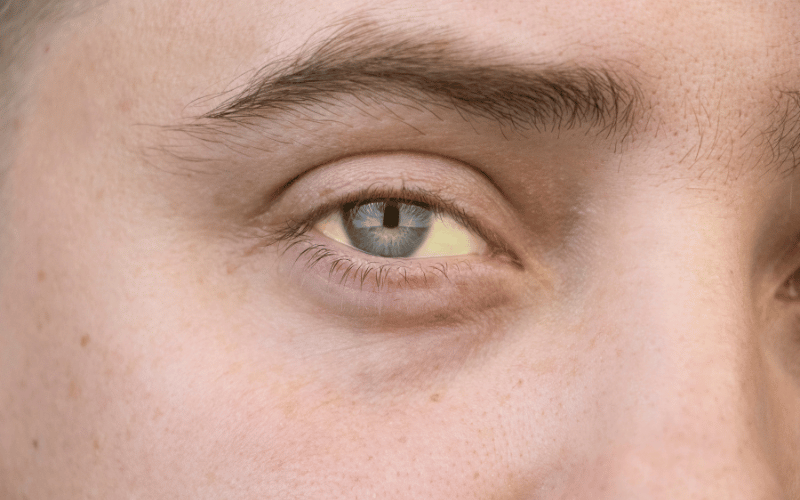7. Jaundice: The Yellowing Signal of HRS

Jaundice is the yellowing signal of hepatorenal syndrome, an evident symptom that paints a patient’s skin and eyes with a distinctive hue. This discolouration is caused by the buildup of bilirubin, a byproduct of red blood cell breakdown that the liver usually processes and eliminates. In HRS, the liver’s compromised state allows bilirubin to accumulate, staining tissues with its yellow pigment.
The journey into jaundice starts unnoticed, often first detected in the whites of the eyes that take on a creamy, yellow tint. As bilirubin levels rise, the yellowing spreads, becoming more apparent, a visible marker of the liver’s plight. Jaundice itself is painless, but it carries the weight of implication, a signal that cannot be hidden and one that often evokes concern in those who observe its progression.
This symptom bears a heavy psychological burden as well. Patients might grapple with self-consciousness and the social stigma associated with a visibly diseased appearance. Beyond the skin and eyes, jaundice can also affect other areas of the body, including the mucous membranes, further deepening the visual impact of the condition.
For medical professionals, jaundice is a diagnostic beacon. It points to the severity of liver dysfunction and helps gauge the progression of hepatorenal syndrome. While it is not directly linked to the renal aspect of HRS, jaundice epitomizes the systemic nature of the condition—a reminder that the health of one organ can profoundly influence another. (7)